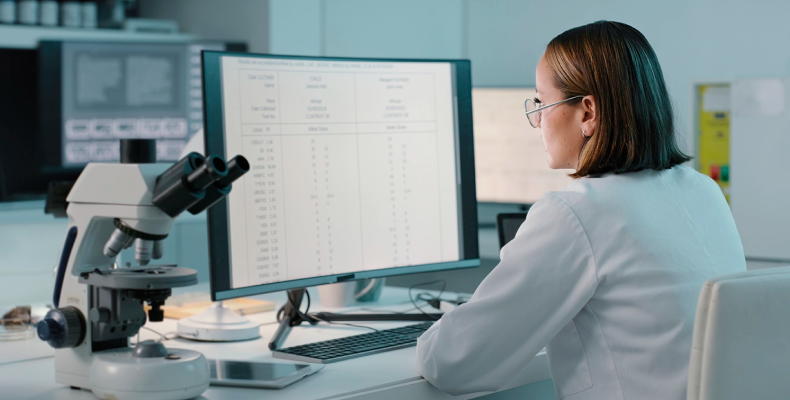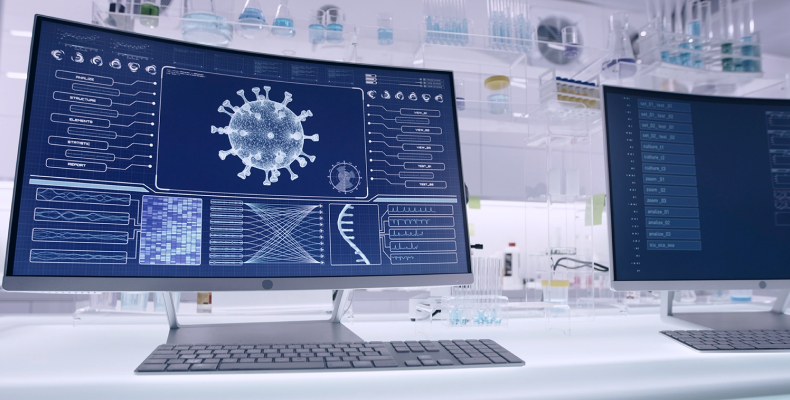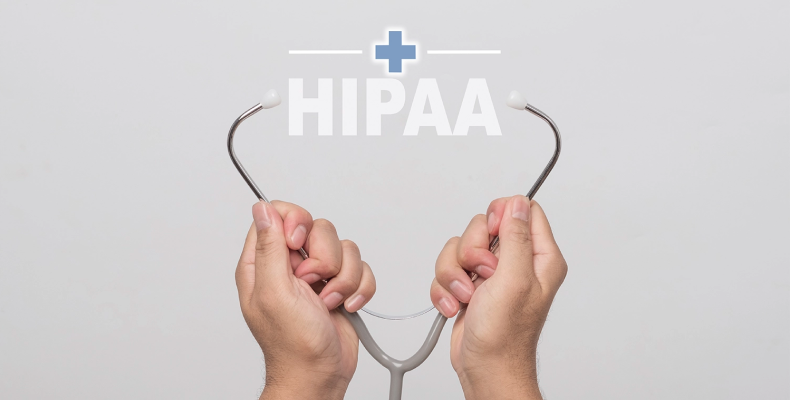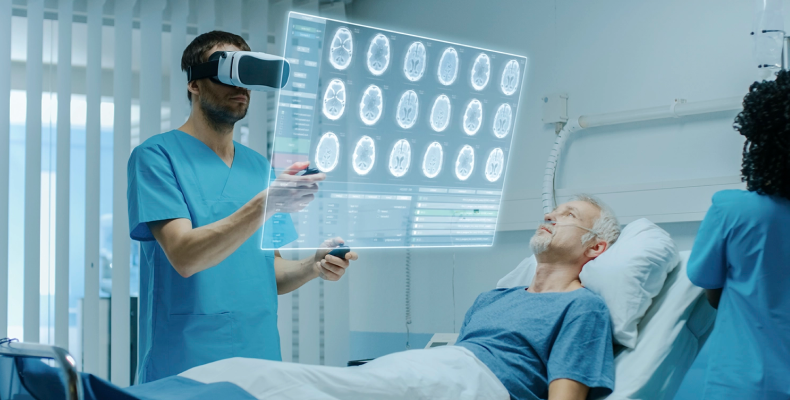Product Lifecycle Management (PLM) in pharma means keeping track of a medicine from when it’s first thought of until it’s not used anymore. PLM software helps work together, organise data, and improve processes at every stage of a medicine’s life.
Pharmaceutical software development: Unleashing pharma innovation

 16 minutes read
16 minutes read
Content
In the pharmaceutical world, creating custom software solutions has become crucial. These programs help companies in the industry work more efficiently by simplifying tasks, assisting in finding new medicines, and ensuring patients receive better care. Pharmaceutical companies increasingly turn to personalised software solutions to improve their operations and stay competitive in the ever-changing global market.
Throughout this article, we’ll dive into software development in the pharmaceutical industry. We’ll explore how these programs solve problems, the challenges companies encounter when putting them into action, and the evolving role of software development in this sector.
What is pharmaceutical software development?
Software development for pharma refers to creating software that meets the needs of the pharmaceutical industry. These solutions are tailored to help with managing clinical trials, tracking drug manufacturing processes, ensuring regulatory compliance, and handling data related to drug discovery. The goal is to improve efficiency, accuracy, and overall effectiveness in developing and producing pharmaceuticals through technology.
Business benefits of pharmaceutical software development
Software development for pharma brings several key business benefits to the industry:
Improved efficiency: Streamlining processes such as drug development, clinical trials, and regulatory compliance leads to increased operational efficiency. Automation of repetitive tasks reduces the likelihood of errors and speeds up workflows.
Enhanced data management: Software allows for the efficient collection, organisation, and analysis of large amounts of data. It aids in better decision-making and is crucial in pharmaceuticals, where accurate data is vital for research and development.
Regulatory compliance: Software solutions ensure that pharmaceutical companies meet the necessary standards. This helps in avoiding legal issues and maintaining a good reputation.
Cost reduction: Through automation and improved efficiency, companies can reduce costs associated with manual processes, paperwork, and potential errors.
Faster time-to-market: Streamlining processes and improving collaboration through pharma software development can accelerate the time it takes to bring a drug to market. This is critical in the competitive pharmaceutical industry.
Better collaboration: Pharmaceutical software facilitates communication and cooperation between teams and departments. This helps in fostering teamwork, especially when working on complex projects.
Patient safety: Enhanced tracking and monitoring capabilities in software contribute to improved patient safety. This includes the ability to respond quickly to any safety concerns.
Adaptability to changes: In a dynamic pharmaceutical industry, software solutions can be adapted to changing regulations, market demands, and technological advancements, ensuring that the business stays up-to-date.
Data security: Robust software solutions help maintain data security and confidentiality, prevent unauthorised access, and ensure compliance with privacy regulations.
Competitive advantage: Companies that invest in custom software development for pharma can gain a competitive edge. They stay ahead in technological advancements, respond faster to market demands, and efficiently manage their operations.
Challenges
Pharmaceutical software development faces several challenges, including:
Regulatory compliance: Meeting the stringent regulatory requirements in the pharmaceutical industry is a significant challenge. Software must adhere to standards such as Good Manufacturing Practice (GMP) and Good Clinical Practice (GCP).
Data security and privacy: With sensitive patient data and proprietary information involved, maintaining robust data security and ensuring compliance with privacy regulations is crucial. This becomes more challenging as cyber threats evolve.
Integration complexity: Pharmaceutical software often must integrate with various existing systems and technologies within a company. Achieving seamless integration can be complex and time-consuming.
Cost and resource constraints: Developing and maintaining sophisticated software solutions can be expensive. Many pharmaceutical companies operate under tight budgets, and allocating resources for pharmaceutical software developers can be a constraint.
Data standardisation: The pharmaceutical industry uses vast amounts of data from various sources. Standardising this data to ensure consistency and accuracy can be challenging, especially when dealing with data from different systems and formats.
Globalisation challenges: Pharmaceutical companies often operate globally, dealing with different regulatory frameworks and cultural nuances. Developing software that can accommodate these diverse requirements can be challenging.

Key features of pharmaceutical software
Pharmaceutical software typically incorporates various features to address the industry’s specific needs. Here are seven key ones:
Regulatory compliance management: Ensures adherence to industry regulations and standards, such as GMP (Good Manufacturing Practice) and GCP (Good Clinical Practice). Helps pharmaceutical companies avoid legal issues and maintain compliance with regulatory authorities.
Data security and audit trail: Implements robust security measures to protect sensitive data. Records and monitors all user activities within the system. Safeguards patient information and intellectual property and ensures accountability for actions taken within the software.
Clinical trial management: Facilitates the planning, tracking, and managing of clinical trials, including patient enrollment, data collection, and regulatory reporting. Streamlines the complex clinical trial process, ensuring accuracy and efficiency.
Integrated data management: Enables efficient handling, analysis, and storage of data generated throughout the drug development lifecycle. Supports informed decision-making by providing a centralised and organised repository of relevant information.
Quality control and assurance: Monitors and manages the quality of pharmaceutical processes, from manufacturing to distribution. Tracks deviations and ensures adherence to quality standards. Helps maintain product quality compliance and reduces the risk of defects or recalls.
Supply chain management: Manages the end-to-end supply chain, including inventory, procurement, and distribution. Ensures efficient and traceable movement of pharmaceutical products. Enhances visibility, reduces errors, and ensures the timely availability of drugs in the market.
Electronic Batch Records (EBR): Digitizes and automates the documentation of manufacturing processes, ensuring accurate and compliant record-keeping. Improves efficiency, reduces paperwork, and facilitates real-time tracking of manufacturing activities.
Reporting and analytics: Provides tools for generating reports and analytics, offering insights into key performance indicators, compliance metrics, and other relevant data. Supports data-driven decision-making, helping identify trends, issues, and opportunities for improvement.


Considering software development for your pharma business?
ontact us to discuss how we can help you build compliant, efficient, and secure solutions.
Types of pharmaceutical software solutions
Pharmaceutical software solutions encompass a variety of applications designed to address specific needs within the industry. Here are several types of pharmaceutical software solutions:
Pharmaceutical Enterprise Resource Planning (ERP) Solutions
ERP solutions aim to integrate various business processes across the entire pharmaceutical enterprise, including manufacturing, finance, human resources, and compliance. The main benefits of these solutions are a holistic view of the entire business operation, compliance with regulatory standards, and high efficiency.
Key features:
- Inventory management
- Batch manufacturing
- Quality management
- Regulatory compliance
- Financial management
- Supply chain optimisation
Pharmaceutical Supply Chain Management (SCM) Software
SCM software is designed to optimise and streamline supply chain processes, ensuring the efficient flow of pharmaceutical products from manufacturing to distribution. Among the benefits are an efficient supply chain, tracking and traceability for compliance, and real-time insights into supply chain activities.
Key features:
- Inventory optimisation
- Traceability and serialisation
- Supply chain visibility
- Demand forecasting
- Supplier collaboration
Pharmacy Management Systems
Pharmacy Management Systems are tailored for managing pharmacy operations, including prescription processing, inventory control, and patient information management. Their benefits include improved patient information management and full compliance with pharmacy regulations.
Key features:
- Prescription processing
- Inventory control
- Patient information management
- Point of Sale (POS)
- Compliance

Why invest in pharmaceutical software development?
Investing in pharmaceutical software development is a strategic move that addresses current operational challenges and positions pharmaceutical companies for future success in a dynamic and competitive industry. Here are some general trends and observations that highlight the benefits of investing in bespoke software development for pharma:
Market growth
According to a report by Grand View Research, the global pharmaceutical software market was valued at over $5 billion in 2020 and is expected to experience significant growth over the coming years. This growth signifies increased adoption and investment in pharmaceutical software solutions.
Efficiency gains
Companies with a pharmaceutical software developer improve their operational efficiency. Automation of processes, streamlined workflows, and optimised supply chain management contribute to cost savings and resource efficiency.
Clinical trial optimisation
The use of Clinical Trial Management Systems (CTMS) and Electronic Data Capture (EDC) systems has been linked to improved efficiency in clinical trials. According to a study published in the Journal of Medical Internet Research, adopting these technologies reduces trial duration and costs.
Regulatory compliance impact
Ensuring regulatory compliance is a critical aspect of pharmaceutical software development. Companies that invest in compliance-focused solutions minimise the risk of regulatory issues and associated financial penalties.
Drug discovery acceleration
Integrating Artificial Intelligence and Machine Learning in drug discovery processes has shown promising results. These technologies analyse vast datasets, speeding up the identification of potential drug candidates. Pharmaceutical companies leveraging such technologies often report faster time-to-market for new drugs.
Supply chain optimisation
With the increasing complexity of pharmaceutical supply chains, companies investing in supply chain management software witness improvements in transparency, traceability, and overall efficiency. This can result in cost savings and reduced risk of counterfeit drugs.
Digital health impact
The growth of digital health solutions, often powered by pharmaceutical software, has been substantial. According to a report by IQVIA, the digital health market is expected to reach $535.6 billion by 2025. This growth indicates software’s increasing role in healthcare and pharmaceuticals.
Precision medicine advancements
Precision medicine, which relies on personalised patient data, benefits from integrating software solutions. As companies invest in technologies supporting personalised medicine, there’s a shift toward more targeted and effective treatments.
Data analytics utilisation
The use of data analytics in pharmaceutical research and development is on the rise. Companies leveraging advanced analytics often report better decision-making, improved patient outcomes, and more efficient clinical trial processes.
Cybersecurity investments
With the growing threat of cyberattacks, pharmaceutical companies investing in robust cybersecurity measures demonstrate a commitment to protecting sensitive patient data and intellectual property.

Regulations and standards to consider in pharma software development
Custom software development for pharma is subject to various regulations and standards. They aim to ensure the safety and compliance of pharmaceutical products and processes. Here are some key regulations and standards that developers need to consider:
Good Automated Manufacturing Practice (GAMP)
GAMP provides guidelines for the validation and compliance of automated systems in pharmaceutical manufacturing. Ensures that software used in manufacturing processes meets quality and regulatory requirements.
Good Clinical Practice (GCP)
GCP is an international ethical and scientific quality standard for designing, conducting, recording, and reporting clinical trials involving human subjects. Software used in clinical trial management must adhere to GCP guidelines to ensure the integrity and reliability of trial data.
Good Laboratory Practice (GLP)
GLP ensures the quality and integrity of non-clinical laboratory studies supporting research or marketing applications. Software used in laboratory settings must comply with GLP to maintain data integrity and traceability.
21 CFR Part 11: Electronic Records; Electronic Signatures (FDA)
Outlines the criteria for which electronic records and signatures are considered trustworthy, reliable, and equivalent to paper records and handwritten signatures. Applicable to software used in processes that generate electronic records and require electronic signatures in the U.S. pharmaceutical industry.
ISO 13485: Medical devices – Quality management systems
Establishes requirements for a quality management system specific to the medical device industry. Relevant for software associated with medical devices used in the pharmaceutical industry.
ISO/IEC 62304: Medical device software – Software life cycle processes
Defines lifecycle processes for pharmaceutical software developers and software within medical devices. Applicable to software associated with medical devices used in the pharmaceutical industry.
ISO 14971: Medical devices – Application of risk management
Provides a framework for managing the risks associated with medical devices. It is important for software involved in developing or operating medical devices in the pharmaceutical sector.
HIPAA (Health Insurance Portability and Accountability Act)
Protects the privacy and security of patient’s medical information. Pertinent for software that handles electronic protected health information (ePHI) in healthcare settings within the pharmaceutical industry.
EU General Data Protection Regulation (GDPR)
Protects the privacy and security of personal data of European Union citizens. This applies to software that processes personal data in the pharmaceutical industry, mainly when dealing with clinical trial data.
Data Integrity Guidelines
Ensures data accuracy, reliability, and consistency throughout its life cycle. It is crucial for software handling and managing data, especially in the context of clinical trials and manufacturing processes.

Pharmaceutical software development: Best practices
Software development for pharma demands adherence to best practices to ensure the creation of high-quality, compliant, and effective solutions. Here are five best practices for pharmaceutical software development:
Regulatory compliance
Stay informed and adhere to relevant regulations and standards, such as GAMP, GCP, 21 CFR Part 11, and others, depending on the geographical location. Ensure the software meets the necessary quality and compliance requirements to reduce the risk of legal issues and regulatory challenges.
Validation and testing
Implement validation and testing processes, including unit testing, integration testing, system testing, and user acceptance testing. It helps to validate that the software functions as intended, identifying and rectifying issues early in the development lifecycle and ensuring the reliability and integrity of the final product.
Data security and privacy
Prioritise robust data security measures, including encryption, access controls, and secure storage, especially when dealing with sensitive patient data. This way, you protect against unauthorised access and data breaches and ensure compliance with data protection regulations such as HIPAA and GDPR.
Collaboration and communication
Foster open communication and collaboration among cross-functional teams, including developers, regulatory experts, and end-users. This enhances understanding of project requirements, facilitates knowledge transfer, and ensures that the software aligns with the needs of all stakeholders.
Agile development methodology
Adopt an Agile development approach, breaking the development process into iterative and incremental cycles with continuous feedback. Agile enables flexibility to respond to changing requirements, promotes collaboration, and allows for the early detection and resolution of issues during development.
Documentation and traceability
Maintain thorough documentation throughout the pharma software development process. It includes design documents, user manuals, and test scripts. By doing this, you ensure transparency and have a clear trail of development activities.
Key technologies for pharmaceutical software development
Here are technologies that play a crucial role in software development for pharma. Adopting them in pharmaceutical software development improves efficiency, data security, compliance, and healthcare delivery.
Cloud Computing: Cloud platforms provide a scalable and flexible infrastructure for hosting and managing pharmaceutical applications and data. Cloud computing is utilised for data storage, processing, and sharing, enabling collaboration among geographically dispersed teams.
Blockchain: Offers a decentralised and secure way to record and verify transactions, providing transparency and traceability. Used in pharmaceutical supply chain management, it helps to enhance the traceability of drugs and ensure the authenticity of the supply chain.
Internet of Things (IoT): Connects devices and sensors to collect real-time data, enabling better monitoring and control of pharmaceutical processes. IoT is employed in pharmaceutical manufacturing for real-time monitoring of equipment, temperature-sensitive storage, and logistics.
Big Data Analytics: Analyzes large volumes of data to extract valuable insights, aiding in drug discovery, clinical trials, and decision-making. Big data analytics is used to analyse patient data, clinical trial results, and other relevant information for research and development purposes.
Artificial Intelligence (AI) and Machine Learning (ML): AI enables computers to learn from data and make smart decisions, improving efficiency and decision-making. It’s being mainly used in drug discovery, predictive analytics for patient outcomes, and automation of various processes in pharmaceutical research and development.
Mobile app development: Facilitates access to pharmaceutical information, patient data, and medical records on mobile devices. Mobile apps are used for remote patient monitoring, medication adherence, and accessing clinical trial information.
Cybersecurity solutions: Protect sensitive pharmaceutical data from unauthorised access, breaches, and cyber threats. They are essential for securing electronic health records, patient data, and intellectual property related to drug development.
Data integration platforms: Facilitate data integration from various sources, ensuring a unified information view. These platforms help to integrate data from different phases of drug development, clinical trials, and manufacturing processes.
Clinical Trial Management Systems (CTMS): Provide tools for planning, tracking, and managing clinical trials efficiently. CTMS streamline the processes associated with clinical trials, ensuring compliance and accurate data collection.

The future of software development in the pharmaceutical industry
As technology evolves, software development for pharma will play a crucial role in driving innovation and addressing the unique industry challenges. Companies that embrace these trends are likely to stay at the forefront of advancements in pharmaceutical technology:
AI and ML in drug discovery: Increasing use of AI and machine learning algorithms to analyse vast datasets, accelerating drug discovery processes and identifying potential candidates more efficiently.
Personalised medicine software: Development of software solutions that support personalised medicine, tailoring treatments based on individual patient characteristics and genetic information.
Blockchain for drug traceability: Widespread adoption of blockchain technology for enhanced traceability and transparency in the pharmaceutical supply chain, addressing issues like counterfeiting and ensuring the authenticity of drugs.
Telehealth and remote patient monitoring: Expansion of telehealth platforms and remote patient monitoring solutions, supported by pharma software development, to improve patient outcomes and provide healthcare services beyond traditional settings.
Regulatory Technology (RegTech): Continued development of RegTech solutions to streamline regulatory compliance processes, ensuring that pharmaceutical companies can adapt efficiently to evolving regulatory landscapes.
Augmented Reality (AR) and Virtual Reality (VR) in training and simulation: Integration of AR and VR technologies for training purposes, allowing pharmaceutical professionals to engage in realistic simulations of manufacturing processes, lab work, and complex procedures.
Digital twins for manufacturing optimisation: Adopting digital twin technology to create virtual replicas of pharmaceutical manufacturing processes, enabling real-time monitoring, analysis, and optimisation for increased efficiency and quality control.
Cybersecurity enhancements: Continued focus on strengthening cybersecurity measures to protect sensitive patient data, intellectual property, and critical infrastructure from evolving cyber threats.
Integration of wearables and IoT devices: Increased integration of wearables and IoT devices into pharmaceutical software, supporting remote patient monitoring, data collection for clinical trials, and real-time health tracking.
Collaboration platforms for research and development: Development of advanced collaboration platforms that facilitate seamless communication and data sharing among researchers, clinicians, and stakeholders involved in pharmaceutical R&D.
Conclusion
Pharmaceutical software development opens up new doors for innovation in medicine. By creating customised computer programs, it’s possible to make drug discovery faster, ensure that treatments are safe, and improve how pharmaceutical companies work. Technologies like AI, blockchain, and others play significant roles in making this happen.
Pharmaceutical software development with Blackthorn Vision
The pharmaceutical industry is experiencing significant growth. There’s a rising demand for software solutions that simplify and enhance various aspects, from drug discovery to manufacturing and distribution.
At Blackthorn Vision, we offer our expertise and a proven track record in software development for pharma. Our pharmaceutical software developers deliver effective solutions without the hassles of project management. Feel free to contact us to discuss your project and explore how we can contribute to your success!
FAQ
What is PLM in pharma?
What is SAP in pharma?
SAP (Systems, Applications, and Products) in pharma means using SAP software to make different parts of a pharmaceutical company work well together. It helps manage things like operations, finance, supplies, etc.
What is pharmaceutical R&D?
Pharmaceutical Research and Development (R&D) is about finding and making new medicines. It includes discovering drugs, testing them in labs before trying them on people, going through tests with patients, getting approval from regulators, and keeping an eye on medicines even after use.







































































